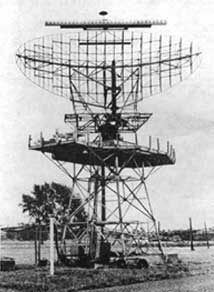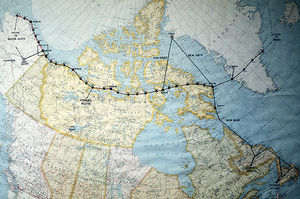DEW Line
In 1952 the U.S military sponsored a study at Massachusetts Institute of Technology (MIT) to assess the country’s vulnerability to air attack. The committee’s recommendations included construction of a network of radar stations to be built in a line stretching from Alaska in the west to a point near Greenland in the east. The system, built in cooperation with the Canadian government (since much of it was located in Canada), was named the Distant Early Warning System Line, or DEW Line.
A contract to construct the DEW Line was given to AT&T in December 1955; research was performed at the Bell Telephone Laboratories, and the actual construction was undertaken by another AT&T subsidiary, Western Electric. Thousands of contractors (including many local Inuit) contributed to the effort, which was finished in July 1957.
There were three main types of stations along the DEW line. The largest were the seven main stations, which were self-contained communities. They had their own water, power, and heating systems, as well as roads, housing, airports, and recreational areas. There were also over 50 smaller stations with less elaborate facilities (the number and location of these stations changed considerably over the years). By stringing main stations and intermediate “gap filler” stations across the countryside, it was possible to scan a wide swath of the sky with radar. Inside darkened rooms, radar operators watched large, round screens 24-hours a day, looking for anything unusual in the sky. Any “target” (such as an aircraft or even a flock of birds) that appeared on the screen set off an audible alarm, and operators set to work to determine what the object was. This data was transmitted to command centers in the United States in the form of Teletype signals transmitted by long-range radio.
The DEW line was reorganized and updated beginning in 1985 and is today called the North American Warning System.

